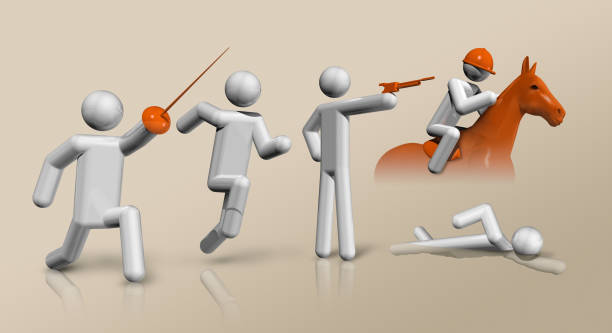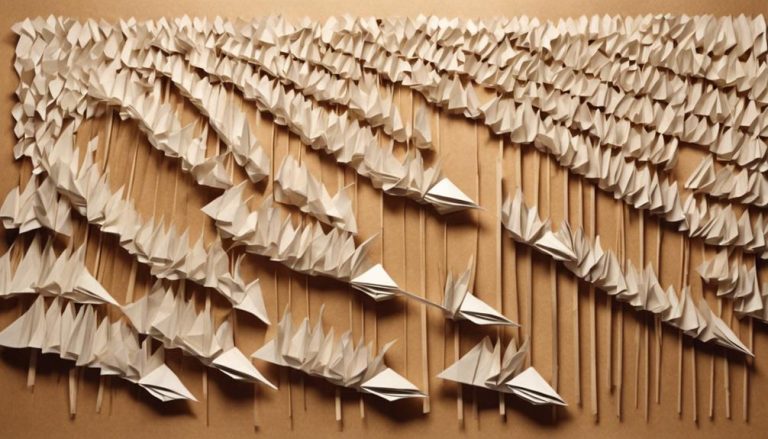General Rules of Jorkyball
If a player commits a foul during a jorkyball match, they may receive a penalty. Penalties are a vital aspect of the game that can sway the outcome in a matter of moments. Understanding the intricacies of penalty rules and execution can be the difference between victory and defeat. Stay tuned to learn more about the nuances of penalties in jorkyball and how they can impact the flow of the game.
Equipment Required for Jorkyball
When gearing up for a game of Jorkyball, the essential equipment includes a pair of specialized shoes designed for indoor sports. These shoes provide the necessary grip and support for quick movements on the court, helping you avoid slips and falls while making sharp turns or sudden stops. Making sure you have the right footwear not only enhances your performance but also reduces the risk of injuries, underlining the importance of safety precautions in this fast-paced game.
Apart from shoes, wearing comfortable sportswear that allows for ease of movement is vital. This enables you to focus on your gameplay without being hindered by restrictive clothing. Additionally, protective gear such as knee pads and elbow pads can be beneficial, especially during intense matches where collisions may occur. Prioritizing safety precautions ensures that you can fully enjoy the game without worrying about potential injuries.
To excel in Jorkyball, incorporating specific training techniques is essential for skill development. Practicing ball control, passing accuracy, and strategic positioning are key aspects to focus on. By honing these skills through regular training sessions, you can enhance your performance on the court and work effectively with your teammate. Consistent practice not only improves your individual abilities but also contributes to a stronger team dynamic, ultimately leading to a more successful gameplay experience.
Court Dimensions and Layout
Understanding the dimensions and layout of the court in Jorkyball is important for optimizing gameplay strategy and coordination. When stepping onto the Jorkyball court, here are three key aspects to keep in mind:
- Court Dimensions: The Jorkyball court is a rectangular space measuring 10 meters in length and 5 meters in width. This compact size requires quick thinking and precise movements from players, making every match fast-paced and exhilarating.
- Player Attire: Players must wear appropriate sports attire, including non-marking shoes to maintain the court's surface integrity. Comfortable sportswear that allows for ease of movement is essential in this high-energy game where agility and speed play an important role in achieving victory.
- Layout: The court is divided into two equal halves by a center line, with each half containing a goal surrounded by a semicircular D-zone. The D-zone is a designated area where only the goalkeeper can enter, providing a strategic advantage for defending the goal.
Basic Gameplay Rules and Objectives
Let's talk about the POINTS in Jorkyball. Scoring and Positions, Passing and Ball Control play essential roles in the game. Understanding these elements will help you strategize and score effectively during matches.
Scoring and Positions
Curious about how scoring works in Jorkyball and the key positions players take on the field? Let's explore! Here's what you need to know:
- Defensive tactics are essential in preventing the opposing team from scoring, while offensive strategies focus on breaking through the defense to score goals.
- The goalkeeper responsibilities include guarding the goal and initiating attacks, whereas attacker movements involve positioning to receive passes and create scoring opportunities.
Understanding these dynamics is important for success in Jorkyball. By mastering defensive tactics, employing effective offensive strategies, fulfilling goalkeeper duties, and making strategic attacker movements, you can elevate your gameplay and lead your team to victory!
Passing and Ball Control
To excel in Jorkyball, mastering passing techniques and ball control is fundamental for maneuvering the field effectively and creating scoring opportunities. Dribbling techniques can help you navigate through tight defensive strategies, while honing your passing accuracy is essential for quick exchanges with your teammate. Incorporating ball handling drills into your practice routine can greatly improve your overall performance on the court. Below is a table outlining some key aspects to keep in mind when working on your passing and ball control skills:
| Passing and Ball Control Tips | Benefits |
|---|---|
| Practice quick passes | Enhances teamwork |
| Work on first touch control | Improves ball retention |
| Develop vision on the field | Increases awareness |
| Enhance ball control techniques | Boosts confidence |
| Focus on passing accuracy | Creates scoring opportunities |
Scoring System in Jorkyball
When understanding the scoring system in Jorkyball, one must grasp the intricacies that govern how points are earned during a match. In this fast-paced sport, scoring is the ultimate goal that requires a mix of offensive strategies, defensive tactics, goalkeeper responsibilities, and scoring techniques. Let's break it down for you:
- Offense Strategies: To score in Jorkyball, your offensive game needs to be on point. Quick passes, clever plays, and coordinated movements can create openings to shoot and score. Working together with your teammate to outmaneuver the opponents is key to finding those precious scoring opportunities.
- Defensive Tactics: While offense is important, defense wins games. Stopping your opponents from scoring is just as important as scoring yourself. Whether it's intercepting passes, blocking shots, or pressuring the opposition, solid defensive tactics can turn the tide of a match in your favor.
- Goalkeeper Responsibilities and Scoring Techniques: The goalkeeper plays a pivotal role in preventing goals and initiating counterattacks. Quick reflexes, agility, and strategic positioning are essential for a goalkeeper to excel in Jorkyball. Additionally, scoring techniques such as accurate shots, well-timed passes, and exploiting the opponent's weaknesses can help secure those valuable points.
In Jorkyball, mastering the scoring system requires a balance of offensive prowess, defensive resilience, and goalkeeping finesse. Stay sharp, stay focused, and keep putting those points on the board!
Substitution and Player Positions
Alright, let's talk about the POINTS in Jorkyball. Substitution Rules guarantee players can swap in and out strategically, keeping the game dynamic. Understanding Player Roles and Position Switching is key to maximizing team performance on the court. Let's break down these elements to elevate your Jorkyball game!
Substitution Rules
Understanding the substitution rules in Jorkyball is essential for players to effectively manage player positions during a match. When it comes to substitutions, consider the following:
- Player Rotations: Strategically rotating players can keep the team fresh and adapt to the opponent's tactics.
- Bench Dynamics: Maintaining good team chemistry on the bench is critical for seamless substitutions and morale.
- Team Chemistry: Substitutions can impact the overall team dynamic, so understanding how each change influences chemistry is important.
Player Roles
Exploring the intricate player roles in Jorkyball offers a deeper understanding of how substitutions and player positions can shape the flow of the game. Defensive strategy plays a pivotal role in Jorkyball, with players needing to coordinate effectively to protect their goal. The goalkeeper holds a pivotal position, responsible for not only making saves but also initiating offensive plays. On the other end of the spectrum, offensive tactics rely on striker movements to create scoring opportunities. Strikers must be agile and strategic in their positioning to outmaneuver the defense and capitalize on chances. Understanding these player roles is essential for success in Jorkyball, as each position contributes uniquely to the team's overall performance and the game's outcome.
Position Switching
As you navigate through the dynamic gameplay of Jorkyball, the strategic element of position switching, encompassing both substitution and player positions, becomes an essential aspect to master. Here are three key points to ponder:
- Tactical strategies: Constant player communication is important for seamless position switching during a match, allowing for quick adaptations to the opposing team's tactics.
- Defensive tactics: Effective substitution and player positioning can enhance defensive capabilities, ensuring a solid backline to thwart the opponent's offensive plays.
- Offensive plays: Strategic player rotations and substitutions can create openings in the opposing team's defense, leading to scoring opportunities and successful offensive maneuvers.
Mastering position switching in Jorkyball not only requires skill but also a deep understanding of tactical nuances and effective player coordination.
Penalties and Disciplinary Actions
When a player commits a foul in Jorkyball, they may face penalties and disciplinary actions imposed by the referee. Player behavior is important in maintaining the spirit of fair play in Jorkyball. Any actions that go against the rules, such as overly aggressive physical contact, verbal abuse, or unsportsmanlike conduct, can result in consequences for the offending player. These penalties serve to uphold the integrity of the game and guarantee a safe and enjoyable environment for all participants.
Referee decisions play an essential role in enforcing penalties and disciplinary actions. The referee has the authority to assess penalties, such as awarding a free shot or temporarily suspending a player from the game. It is essential for players to respect the referee's decisions, even if they disagree with them. In cases where a player wishes to appeal a decision, there are usually procedures in place to address such concerns. By following the established protocol for appeals, players can seek a fair review of the situation and make sure that justice prevails.
Frequently Asked Questions
Can Players Use Their Hands to Touch the Ball in Jorkyball?
In Jorkyball, players can't use their hands to touch the ball. The passing technique is vital for success. By mastering this skill, you'll enhance your gameplay and coordination, making you a formidable opponent on the Jorkyball court.
Are There Any Height Restrictions for Players in Jorkyball?
In Jorkyball, height restrictions aren't imposed on players. It's about skill, not size. Players can excel in various positions regardless of height. Embrace strategic gameplay; adapt your tactics to maximize your team's performance and win!
What Is the Maximum Number of Players Allowed on a Jorkyball Team?
On a jorkyball team, you can have up to 4 players, including 1 goalkeeper. Player substitutions are key for keeping energy high and adapting team strategies. With quick rotations, you can outmaneuver opponents effectively.
Is There a Time Limit for Matches in Jorkyball?
Hey, you, ready to get into the excitement of Jorkyball matches! In this fast-paced game, there's no time to waste – matches are governed by strict time limits, with overtime rules in place.
Are There Any Specific Rules Regarding Player Attire in Jorkyball?
In Jorkyball, specific rules govern player attire and equipment. Uniform requirements guarantee fair play and team cohesion. Equipment regulations mandate appropriate gear for safety and skill enhancement. Familiarize yourself with these guidelines for ideal play.






